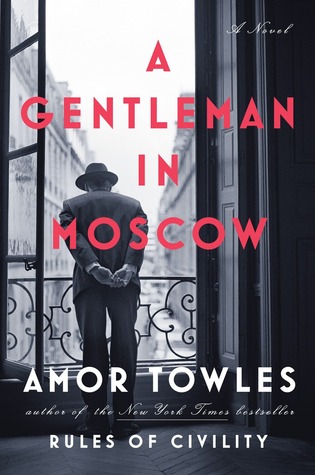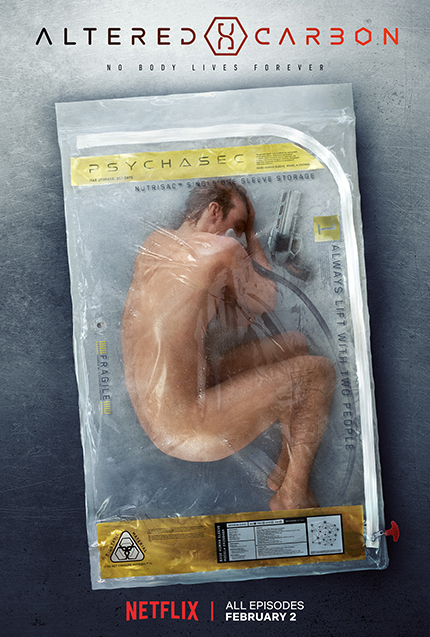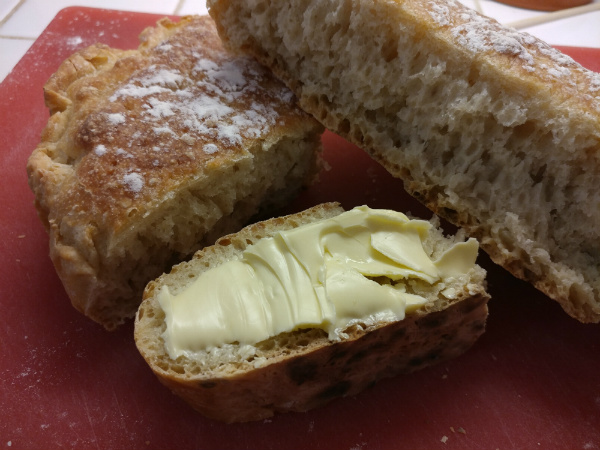Before my husband and I embarked on a low-carb/Paleo/intermittent fasting lifestyle, I used to bake. A lot. I’d get fixated on a particular recipe and make every attempt to master it. When Jim Lahey’s No-Knead Bread revolution came along, with the promise of baking a delicious, highly fermented, rustic-style bread boule, I had to go for it. I then tweaked and tweaked the recipe, incorporating some of Cook’s Illustrated adjustments. No surprise— after making loaf after loaf, our waistlines got thicker and thicker!
For the past five years, bread has not been a part of our menu. So for this holiday and new year’s feasting, I decided to bust out the old recipe as a treat. Oh man, did it taste good! I’ll take a hank of this bread with butter over a Christmas cookie any day.
Alas, 2018 has begun and we’re back to low-carbing it (and feeling much better for it). But there’s always next holiday season …
Recipe after the pix.
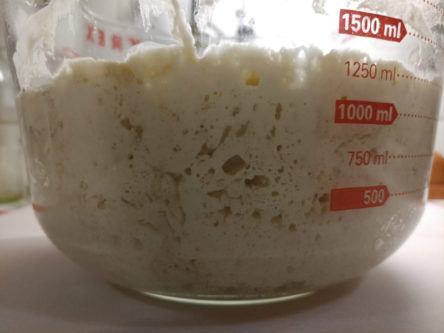
No knead, first rise
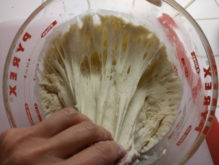
Glorious “evil” gluten strands
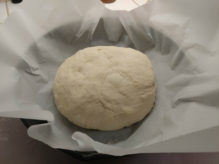
Prepped for 2nd rise
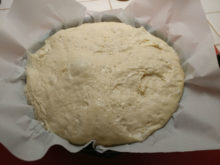
2nd rise

Done!
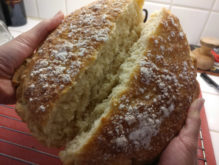
Lots for us!
No-Knead Bread (with tweaks from Cook’s Illustrated)
(makes 1 large round loaf)
3 cups flour
1-1/2 tsp up to (1 tablespoon) salt
1 tsp yeast
1-1/2 cups water
An enameled cast-iron Dutch oven with a tight-fitting lid yields best results, but the recipe also works in a regular cast-iron Dutch oven or heavy stockpot that can withstand 500 degrees.
1. Stir flour, yeast and salt in large bowl. Using rubber spatula, fold mixture, scraping up dry flour from bottom of bowl until shaggy ball forms. Cover bowl with plastic wrap and let sit at room temperature for 8 to 18 hours.
2. Lay a 12- by 18-inch sheet of parchment paper inside a 10-inch skillet and spray with nonstick cooking spray. Transfer dough to lightly floured work surface and knead 10 to 15 times. Shape dough into ball by pulling edges into middle. Transfer dough, seam-side down, to parchment-lined skillet and brush surface of dough with olive oil. Cover loosely with plastic wrap and let rise at room temperature until dough has doubled in size and does not readily spring back when poked with finger, about 2-4 hours. (Longer time yields bigger, chewy holes. I’ve let the 2nd rise go for 8 hours.)
3. About 30 minutes before baking, adjust oven rack to middle position, place a 6- to 8-quart heavy-bottomed Dutch oven (with lid) on rack, and heat oven to 500 degrees. Lightly flour top of dough and, using sharp knife, make one 6-inch long, ½-inch-deep slit along top of dough. Carefully remove pot from oven and remove lid. Pick up dough by lifting parchment overhang and lower into pot (let any excess parchment hang over pot edge). Cover pot and place in oven. Reduce oven temperature to 425 degrees and bake covered for 30 minutes. Remove lid and continue to bake until loaf is deep brown and an instant-read thermometer inserted into center registers 210 degrees — 20 to 30 minutes longer. Carefully remove bread from pot; transfer to wire rack and cool at room temperature, about 2 hours, before slicing.
Slather with butter and devour!
